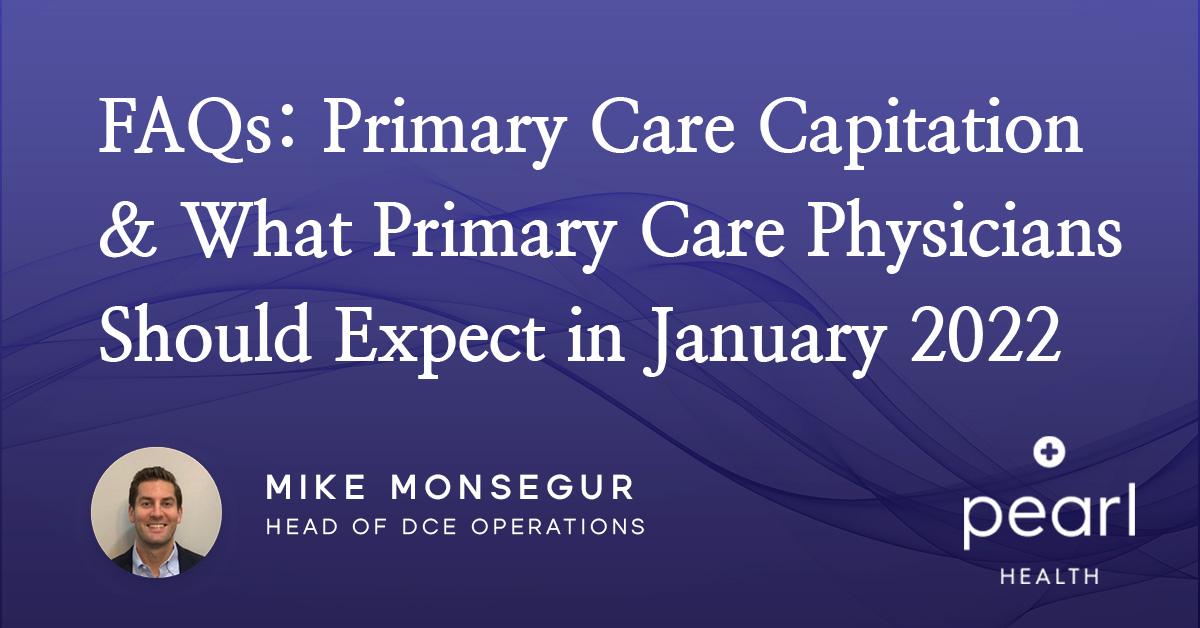As we approach another Medicare ACO performance year, now in the REACH model as opposed to Direct Contracting, we’ve refreshed our FAQ article from last year that breaks down the Primary Care Capitation (PCC) concept into an easy to understand format. We encourage all new and returning Participating PCPs to read this blog post to ensure they’re ready to hit the ground running in 2023.
For many primary care providers (PCPs) and their practices, entering the world of value-based care can be overwhelming and complicated. Managing traditional Medicare fee-for-service (FFS) patients under a CMS-calculated budget is value-based care in its simplest form. The Direct Contracting (DC) model builds upon this structure and introduces a new concept developed to avoid the volatility of FFS and provide PCPs with increased revenue stability and more predictable cash flow for their aligned Medicare patients: Base Primary Care Capitation (BPCC).
If you’re a PCP joining a Direct Contracting Entity (DCE) in 2022, there is still a lot to comprehend about how capitation will impact your monthly revenue in advance of the January 1st start date. In this article, we will address providers’ most Frequently Asked Questions regarding BPCC with the goal of empowering PCPs to take advantage of capitation in the new CMS DC model.
Note: Capitation is the remittance to providers of a fixed reimbursement that is not tied to the volume of healthcare services provided. In other words, rather than receiving compensation for each patient visit or procedure, providers get a set reimbursement based on their assigned population. We previously published an overview of the various forms of capitation in Direct Contracting if you need a quick refresher on some of the fundamentals.
For more help unpacking how Medicare’s Direct Contracting model works, check out these resources. Follow Pearl Health on LinkedIn or Twitter for regular insights in your newsfeed.


